November 1, Celebrating Local Food Culture
Last year, an Ecuadorian family invited us to join their celebration. It started on November 1 when their local community came together for a food festival on a street corner in the small community of Peguche, a neighborhood of Otavalo. There were lots of local dishes we recognized like habas con queso (fava beans with fresh cheese), caldo de gallina (chicken soup), and roasted cuy (guinea pig). But there was one dish we had never tried but were curious about, catzos. This delicacy is available only a few weeks every year, just after the rains have started. If you would like to read more about catzos, please visit the article Catzos – Sierra Snack Food.
Although the event was marketed for tourists, most people eating and enjoying the day were locals from the surrounding area. A small stage had been set up for dancing and music. While we were there, we listened to one of the national assemblyman speak to the small gathering about the importance of history and culture.
November 1, Making Guaguas de Pan
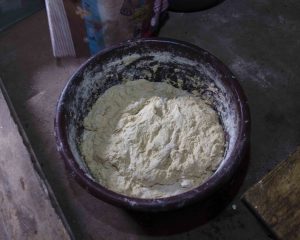 After snacking our way through the festival, we found ourselves visiting back and forth between two family homes. Both were busy making one of the most important items of the Día de los Difuntos festival, bread to be shared on the following day. Huge bowls of bread dough waited to be shaped, then placed on trays for rising, and then baked in huge wood burning ovens.
After snacking our way through the festival, we found ourselves visiting back and forth between two family homes. Both were busy making one of the most important items of the Día de los Difuntos festival, bread to be shared on the following day. Huge bowls of bread dough waited to be shaped, then placed on trays for rising, and then baked in huge wood burning ovens.
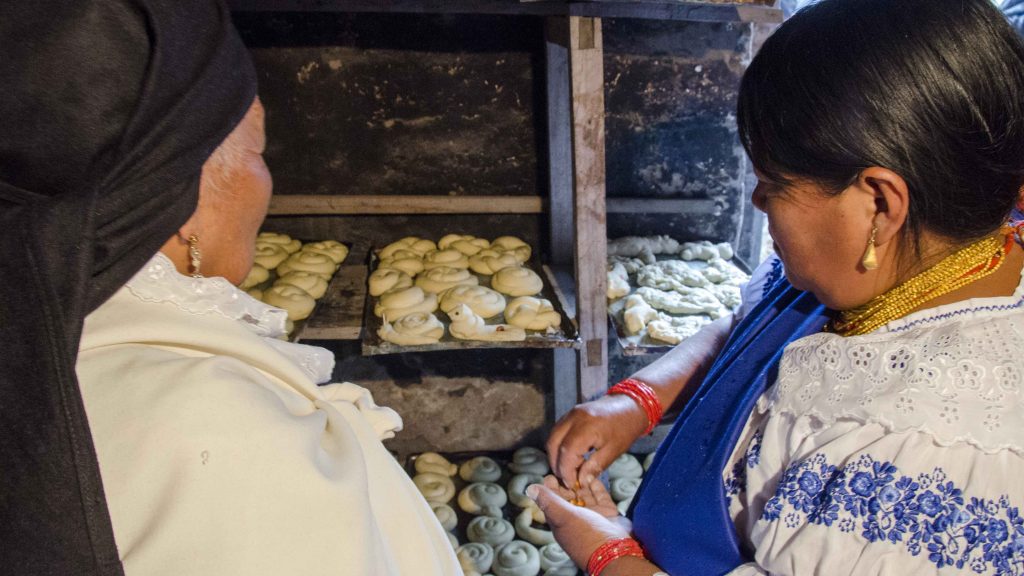
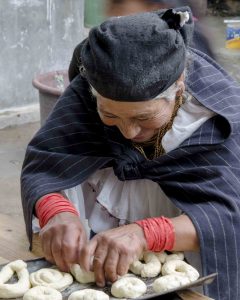 Most of the bread was shaped into small, round rings that could be easily eaten or gifted to friends. But many were shaped like babies. These loaves are called guaguas de pan. The word guagua means baby in Quichua. The guaguas de pan would be taken to the cemetery and placed on the graves of deceased family members on the following day. This practice is common not only in the Sierra of Ecuador, but throughout the Andes of Colombia, Peru, and Bolivia.
Most of the bread was shaped into small, round rings that could be easily eaten or gifted to friends. But many were shaped like babies. These loaves are called guaguas de pan. The word guagua means baby in Quichua. The guaguas de pan would be taken to the cemetery and placed on the graves of deceased family members on the following day. This practice is common not only in the Sierra of Ecuador, but throughout the Andes of Colombia, Peru, and Bolivia.
In Peguche and Otavalo, the tradition has come to include bread shaped like horses. When I asked why my friend Khristian told me that the boys didn’t always want to make bread that looked like baby dolls so horses became the popular solution. He then proceeded to make a horse and rider from scratch, rolling out the bread dough and stretching it into place. Then he took some black carbon ash from the fire, added it to a small lump of dough which he then rolled into pieces that became details like the bridle on the horse.
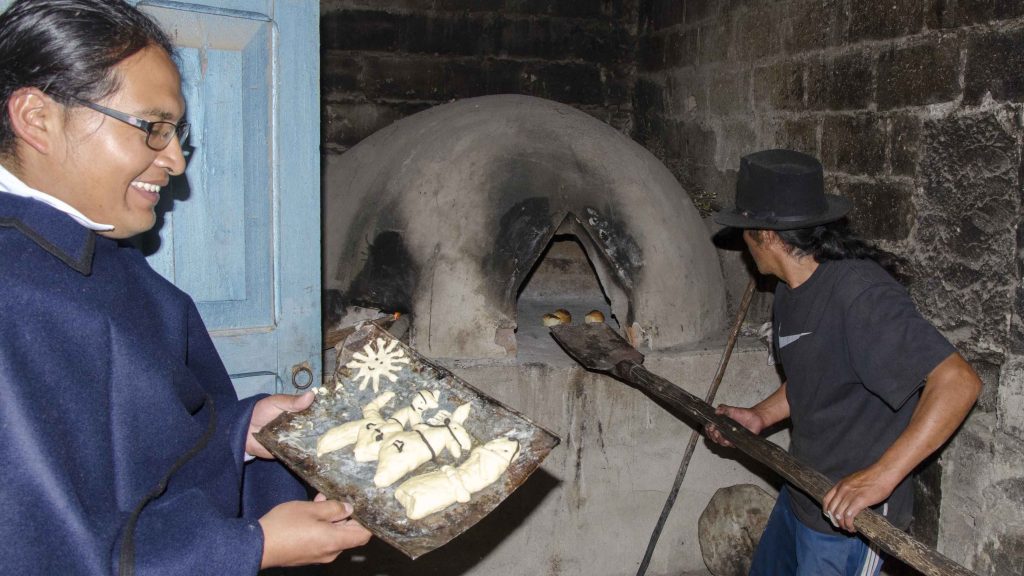
Khristian Campo takes his handcrafted guaguas to the wood fire oven to bake, Peguche, Ecuador | ©Angela Drake
Today, it is common to see guaguas de pan with brightly colored details. In the big city of Quito, the details are added with frosting and the bread is often filled with sweet flavors like dulce de leche. But in Peguche and Otavalo, the bread dough is plain and unsweetened. The decoration is simply brightly colored bread dough baked onto the loaves.
November 2, Día de los Difuntos, Visiting the Cemetery
The following day, we met our friends at the big cemetery in Otavalo, where their family members are buried.
 When we arrived, the street that leads to the cemetery entrance was already crowded. Vendors lined both sides and most were selling guaguas de pan. These were huge versions of the loaves, some a half meter tall. The crowd pushed each other, slow but sure, through the waiting cemetery gates. Once inside, the cacophony was incredible. People were everywhere and all of them were talking. People were excited and happy and a few even smiled in our direction. And this is no small thing – we were two white people dressed like tourists with cameras hanging from straps and we stuck out like sore thumbs. But taking pictures was not as hard as I thought. A simple question, “Por favor, me gustaría sacar una foto de su familia. Puedo hacerlo?” and many said yes. It was even easier once we found our friend and were introduced as guests of the family.
When we arrived, the street that leads to the cemetery entrance was already crowded. Vendors lined both sides and most were selling guaguas de pan. These were huge versions of the loaves, some a half meter tall. The crowd pushed each other, slow but sure, through the waiting cemetery gates. Once inside, the cacophony was incredible. People were everywhere and all of them were talking. People were excited and happy and a few even smiled in our direction. And this is no small thing – we were two white people dressed like tourists with cameras hanging from straps and we stuck out like sore thumbs. But taking pictures was not as hard as I thought. A simple question, “Por favor, me gustaría sacar una foto de su familia. Puedo hacerlo?” and many said yes. It was even easier once we found our friend and were introduced as guests of the family.
We climbed up the hillside to the family plot. At first, then we climbed using the cement stairs to take us up level by level. We found a large table set up with the offerings of many families joined together for the celebration. In some ways, the huge offering is like our cornucopia of Thanksgiving, a reflection of all that is good at harvest time. There were ears of whole corn and freshly dug potatoes, platters of papaya and plantains, baskets of eggs, smaller bowls of prepared tostado, a type of toasted corn, and brightly colored rose petals scattered over all.
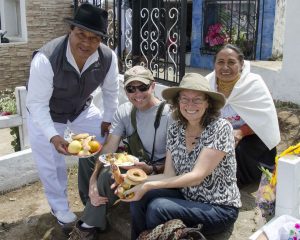 As we climbed higher and moved over, we lost cement and found ourselves walking directly among the graves. The ground was dry and dusty. Old paths were well worn between many family mausoleums and smaller graves. Children were climbing everywhere and even adults used the mausoleums as places to sit and observe the goings-on of the day.
As we climbed higher and moved over, we lost cement and found ourselves walking directly among the graves. The ground was dry and dusty. Old paths were well worn between many family mausoleums and smaller graves. Children were climbing everywhere and even adults used the mausoleums as places to sit and observe the goings-on of the day.
We sat among the Cotacachi graves and passed food from one family member to another. We shared a plate of chicken and potatoes. We watched as individuals dressed in white wearing head coverings of blue prayed at the headstones of certain graves. Khristian’s father told us that these people were paid to come and pray for the deceased. And although the prayers took a sober tone, it seemed to be one of the few serious moments of the day. For the most part, people were happy to be sharing time together. Families were catching up with the day to day happenings of members who traveled from far away to come for this special celebration. Children were playing as if they were in their own backyard. The overall feeling was one of relaxation.
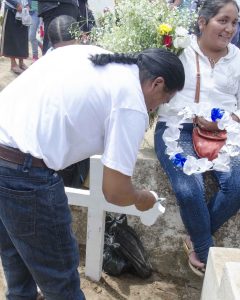 After sharing a meal, we wandered up to the very top of the cemetery to see the view all around. We passed men painting metal grills and old wooden crosses. We saw women replacing old flowers with new. And we saw grave after grave with food placed right beside the cross marking it. We noticed a wandering minstrel, one of the few other white people on the grounds. He was offering to play music by the graveside but his skills went unrequested.
After sharing a meal, we wandered up to the very top of the cemetery to see the view all around. We passed men painting metal grills and old wooden crosses. We saw women replacing old flowers with new. And we saw grave after grave with food placed right beside the cross marking it. We noticed a wandering minstrel, one of the few other white people on the grounds. He was offering to play music by the graveside but his skills went unrequested.
A woman from Quito visiting her family asked us questions about why we came. We said we missed our family in the United States and that by coming to events like this, it helped us feel better connected with the Ecuadorian community and, ironically, with family back home. 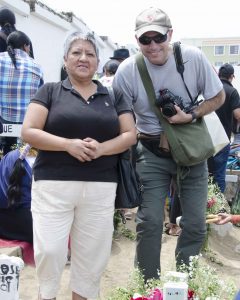 Watching kids play, seeing grandmothers pass around food, observing men and women converse, admiring beautiful traditional clothing, all were a reminder of the similarities to our own culture, even while we were partaking in an event that is nothing like any I grew up with.
Watching kids play, seeing grandmothers pass around food, observing men and women converse, admiring beautiful traditional clothing, all were a reminder of the similarities to our own culture, even while we were partaking in an event that is nothing like any I grew up with.
From the top of the cemetery, we looked out over Otavalo. We could see the base of cloud-covered Imbabura in the distance. And the multitude of people was very apparent from up high. Looking down, the cemetery was a sea of black dotted with bright color. And then we noticed, in the lower right-hand corner, a corner of the cemetery full of tall structures and cemented sidewalks. It was practically empty in comparison with where we were sitting. On our way back down, we asked Khristian about this lonely looking place and he told us that it was the cemetery for those who were not indigenous but criollo. These are families of European, primarily Spanish, decent.
We decided our visit would not be complete without a visit to this second spot. Many in the criollo cemetery were marking the day as well but no one was eating a meal together. People were wandering up and down the neatly laid paths, talking quietly as if in church. There was no food on the graves though many were decorated with huge floral wreaths. The feel of the two cemeteries could not have been more different.
November 2, Día de los Difuntos, Visiting Downtown
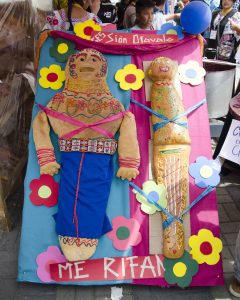 By early afternoon, although some people were still pushing into the cemetery, many had started to leave. It made for a traffic jam of bodies but everyone was very polite and we pushed our way through with smiles and nods. We were not sure what we would do with the rest of our day but we should not have been concerned. We entered the city streets of Otavalo and found a party going on. There were vendors selling hornado with mote, tostado, tortillas de papa, and agrio (roast pork with hominy, toasted corn, mashed potato pancakes, an onion and tomato salad). This is festival food in the Sierra!
By early afternoon, although some people were still pushing into the cemetery, many had started to leave. It made for a traffic jam of bodies but everyone was very polite and we pushed our way through with smiles and nods. We were not sure what we would do with the rest of our day but we should not have been concerned. We entered the city streets of Otavalo and found a party going on. There were vendors selling hornado with mote, tostado, tortillas de papa, and agrio (roast pork with hominy, toasted corn, mashed potato pancakes, an onion and tomato salad). This is festival food in the Sierra!
The streets were crowded with people rather than cars. We found the longest guagua de pan we have ever seen and bought tickets to win the pareja de guagua de pan, an Otavleño couple made out of bread. We ran into Khristian and his family once again and joined them to watch his sister dance with a local troupe. We then shared colada morada, a drink made with fruit juices, thickened with blue corn flour, and served alongside guaguas de pan. We bounced from one tradition to the next the entire afternoon.
Tips and Tricks for Photographing Día de los Difuntos
As you can tell, this trip is packed with activity but much of the time was spent with people we already knew. If you decide to go to Otavalo to share in the Día de los Difuntos activities, you will unlikely spend time visiting with people.
Be aware that although locals may be welcoming, very few people enjoy having their photo taken without being asked. Even taking a photo of bread displays can cause distress if the vendor does not approve beforehand. We did manage crowd shots and panoramas without asking permission. People in parades, dancing for crowds, or playing music for all are generally granting permission to have their photos taken. Several of our shots at the cemetery were taken at the family plot and we were granted overall permission as long as we were polite and non-invasive.
Not all Ecuadorians speak or understand English. Before visiting local festivals, know how to say please and thank you, hello and goodbye, and how to ask basic questions in Spanish that you might need to be polite. If you want to throw in some Quichua, people will be absolutely thrilled. If your language skills are lacking, at the very least, cultivate a smile that asks a question with your eyes and hand movements before snapping that shot. Many people will tell you no but the photos you do get will be shots worth having.


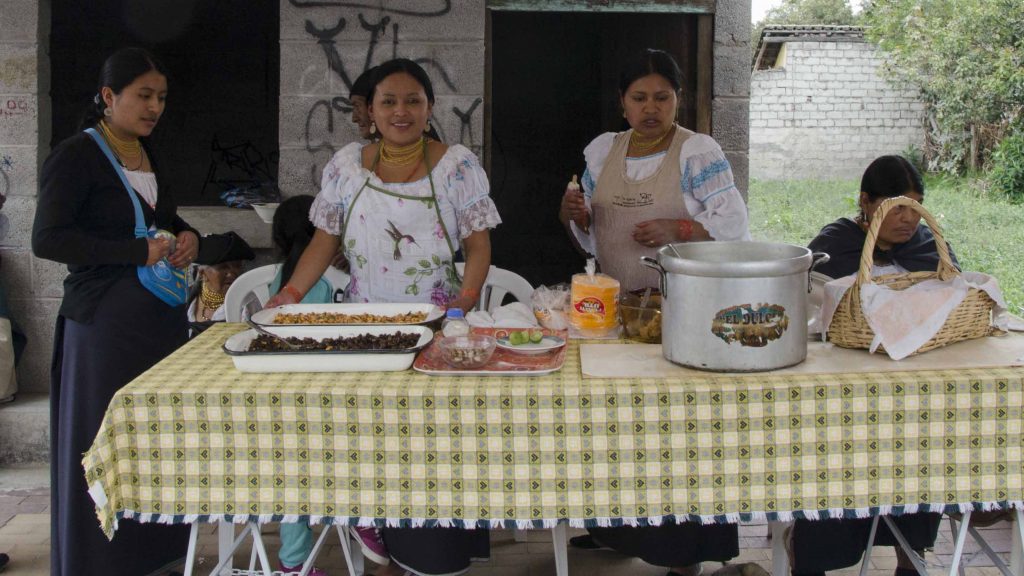
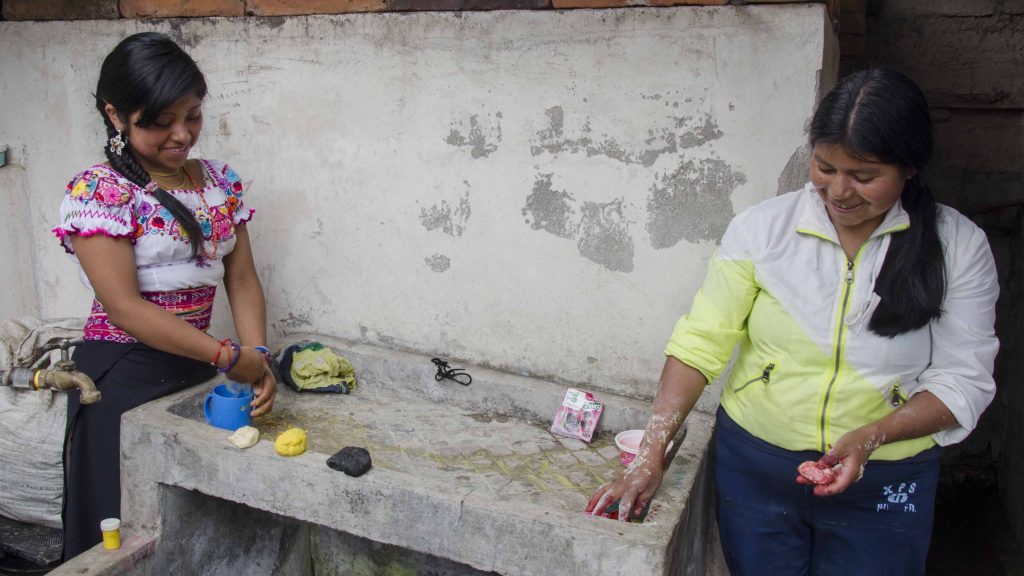
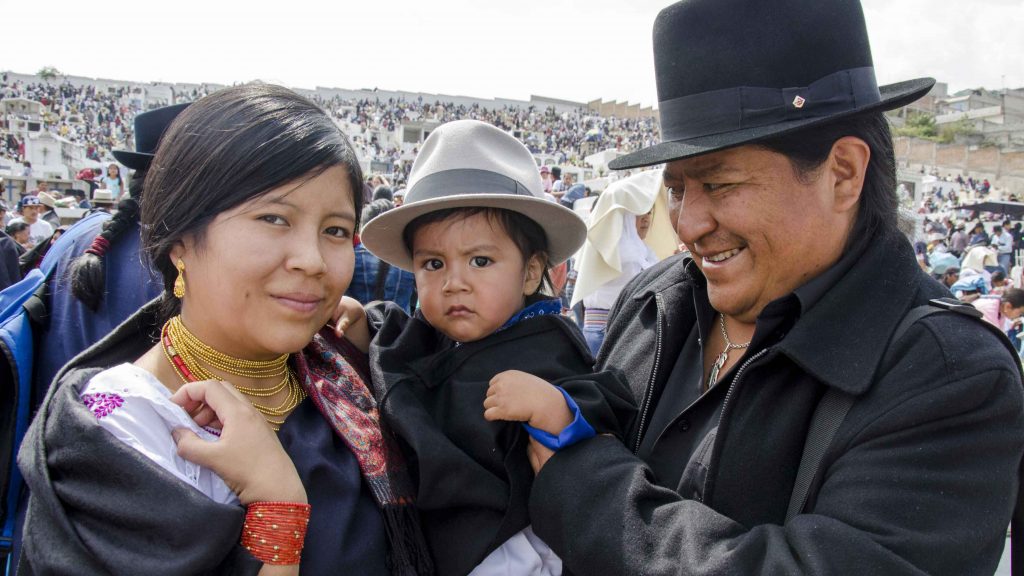
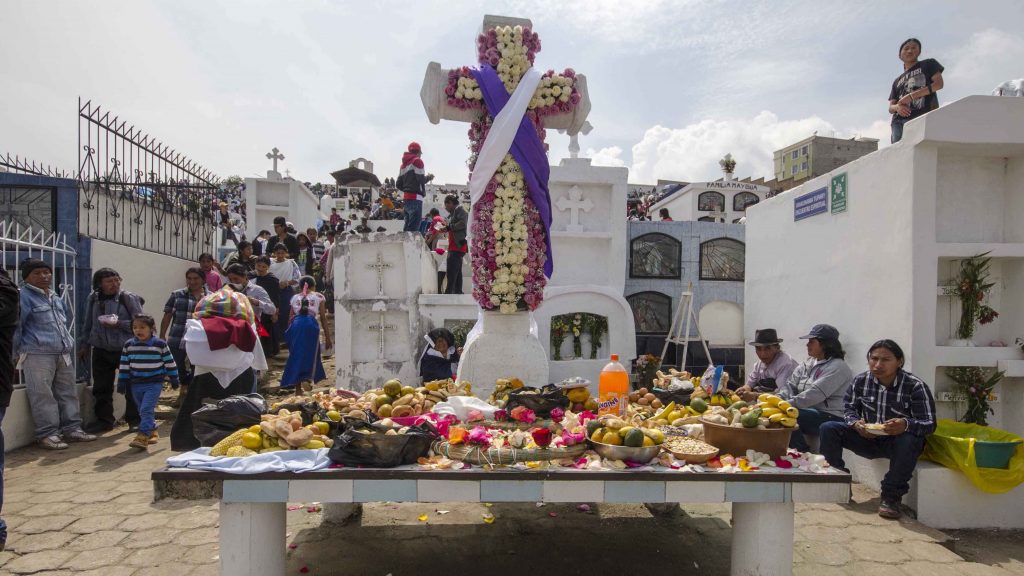
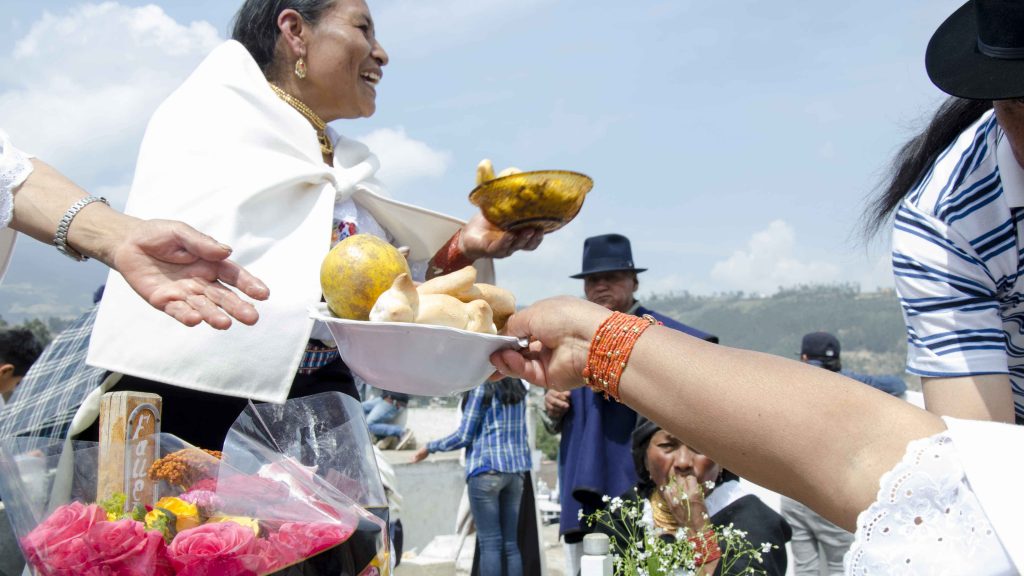
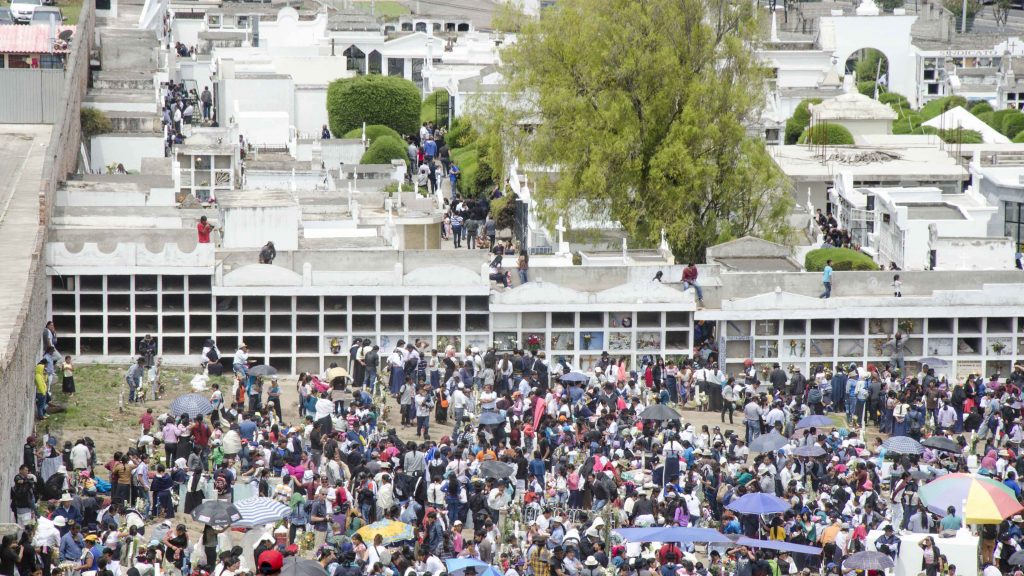
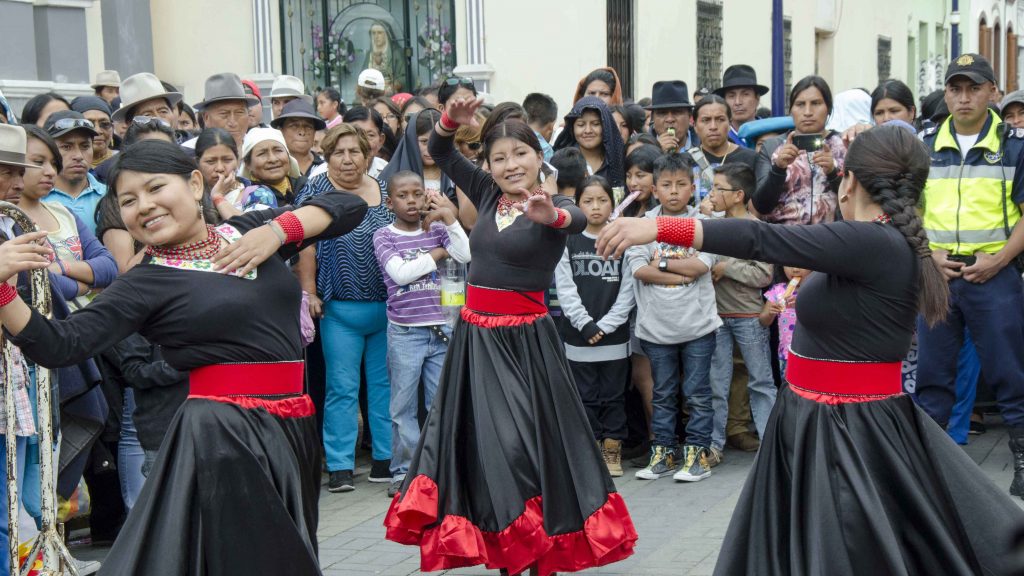
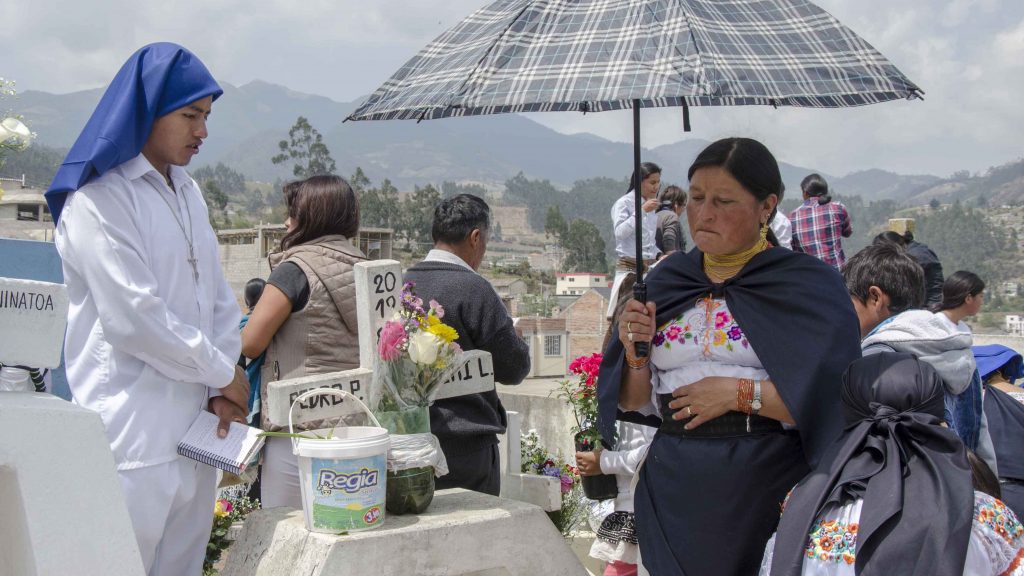









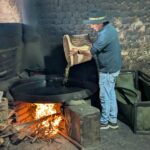


Hi Angela,
So funny to just bump into you at Leña Quiteña! We just asked you about your walk to the cemetery San Diego and when I saw your card I realized I had already been to your website (looking at this one on Otavalo on Dia de los Muertos). Small world!
See you in Latacunga, perhaps.
Ken & Kyla
Hope to run into you both again. We will keep our eyes open during Mama Negra! Enjoy all the beauty that Ecuador has to offer ~Angie